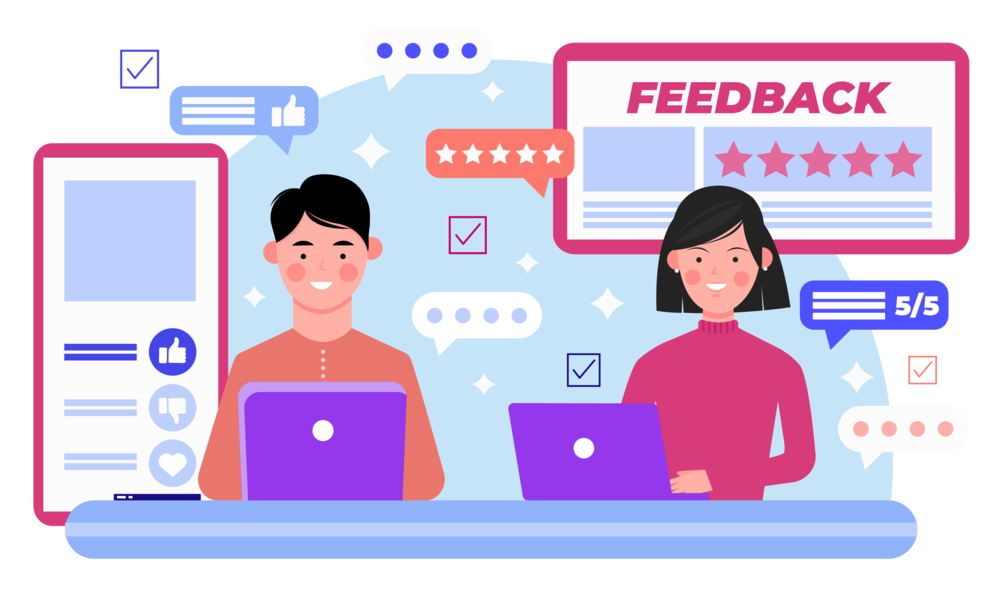How to build an HRM software development?
HRM software can help organizations improve both their HR efficiency, boost their effectiveness, productivity and employee satisfaction.
This article will provide some common ways to build an HRM software development.
1. Functions of HRM software
HRM software is a type of software that helps organizations manage their human resources and related processes. HRM software can perform various functions, such as:
• Storing and updating employee data, such as personal information, skills, qualifications, performance, attendance, and compensation.
• Automating and streamlining HR processes, such as payroll, benefits, recruitment, onboarding, training, performance appraisal, and compliance.
• Providing self-service options for employees and managers to access and update their information, request leaves, submit expenses, give feedback.
• Providing data-driven insights and analytics for strategic HR decisions, such as workforce planning, talent management, employee engagement, and analytics.

2. What is HRM software development?
HRM software development is the process of creating, designing, and maintaining software solutions that help organizations manage their human resources and related processes.
HRM software development can involve various activities:
• Analyzing the needs and requirements of the organization and its stakeholders.
• Choosing the appropriate software architecture, platform, and technology.
• Developing the software features and functions according to the specifications.
• Testing and debugging the software for quality and performance.
• Deploying and updating the software in the cloud or on-premises.
• Providing training and support for the users and administrators.

3. When to build HRM software development
Some general indicators that suggest you may need a custom HRM software solution are:
• A large and diverse workforce that requires different types of HR processes and policies.
• Complex and specific HR needs that cannot be met by off-the-shelf or open-source HRM software solutions.
• Want to have more control and flexibility over your HRM software features, functions, integrations, and updates.
• Want to gain a competitive edge by using advanced HR technologies, such as artificial intelligence, machine learning, big data analytics, and cloud computing.
• Want to improve the efficiency, effectiveness, and productivity of your HR processes and outcomes.
• Want to enhance the user experience and satisfaction of your employees, managers, and HR staff.
• Want to ensure compliance with laws and regulations related to HR.
If you find yourself in one or more of these situations, then it may be time to consider building a custom HRM software development for your business.

4. HRM software development: In-house or outsource?
HRM software development can be done by internal IT teams or external software vendors. Some organizations may also use off-the-shelf or open-source HRM software solutions that can be customized or integrated with their existing systems.
There is no definitive answer to whether you should develop your HRM software in-house or outsource it to a third-party vendor, as it depends on various factors, such as your business size, goals, needs, budget, and preferences.
We are providing some general advantages and disadvantages of both approaches so that you can refer to make a development decision.
In-house HRM software development
Pros:
- More control over the quality, security, and confidentiality of your software.
- Communicate directly and face-to-face with your developers.
- Quick changes and adjustments to your software according to your feedback.
- Ensure a better cultural fit and alignment with your business vision.
Cons:
- High costs of hiring, training, and retaining qualified developers.
- More time and resources in managing and maintaining your software.
- Limitations in terms of technical expertise, innovation, and scalability.
Outsourcing HRM software development:
Pros:
- Save costs and improve cash flow by paying only for the services you need.
- A wide talent pool of experienced and skilled developers from different locations.
- Increase efficiency and productivity by delegating non-core tasks to external experts.
- Leverage advanced technologies and best practices from the outsourcing partner.
Cons:
- Communication issues or cultural differences with the outsourcing partner.
- Higher security risks or data breaches due to sharing sensitive information with a third party.
- Lose some control and flexibility over your software development process and outcomes.

5. How to build an HRM software
Here are some steps you need to take to build your own HRM software solution:
Define your objectives and requirements
You need to have a clear idea of what you want to achieve with your HRM software development and what features and functions you need to support your HR processes. You can start by identifying your pain points, challenges, opportunities, and expectations in your HR department. You can also conduct a SWOT analysis of your current performance and processes. This will help you determine your priorities and goals for improving your HR efficiency and effectiveness.
Research and compare different software options
Once you have a clear understanding of your objectives and requirements, you need to research and compare different software options that match your criteria. There are some various sources of information, such as online reviews, testimonials, case studies, demos, and free trials to learn more about the features, benefits, drawbacks, and prices of different software options.
Evaluate and select the best software solution for your business
After you have researched and compared different software options, you need to evaluate them based on your objectives and requirements. You can use various methods and criteria to assess the suitability and quality of each software solution, such as: Functionality, Usability, Scalability, Reliability, Security, Cost.
Choose the IT provider
To choose the best tech provider for your project, you need to consider various factors, such as their portfolio, reputation, expertise, communication skills, availability, pricing model, contract terms. If you hire oursource, you will be the one to approve or finalize the steps below. If you develop in-house, the steps below will be performed one after another.
User experience (UX) design
This is a primary stage of custom web development when you determine the basic structure, layout, navigation, functionality, and appearance of your HRM software solution. You need to create wireframes, mockups, prototypes, user stories, user flows, that will guide the development process and ensure a positive user experience for your employees, managers, and HR staff. You need to involve your stakeholders, users, and developers in the design process and collect their feedback and suggestions. You also need to follow the best UX design practices and principles, such as simplicity, clarity, consistency, responsiveness, accessibility, etc.
MVP development
Though some people may think that MVP is a product with minimal functionality, it is not true. MVP is a product that has enough features to satisfy early adopters and validate your business idea. MVP development is a crucial step in your HRM software development project, as it allows you to test your assumptions, gather user feedback, measure user behavior, and learn from your mistakes. MVP development also helps you save time and money by avoiding unnecessary features and focusing on the core value proposition of your software solution.
Product development
After you have validated your MVP and collected enough data and insights, you can proceed to the full-scale product development. This is where you add more features and functions to your HRM software solution based on feedback and business goals. Follow the agile methodology and use various tools and techniques to ensure a smooth and efficient development process, such as scrum, kanban, sprints, backlog, user stories, etc. Perform regular testing and debugging to ensure the quality and performance of your software solution.
Software maintenance
The last but not least step in your HRM software development project is software maintenance. This is where you monitor, update, and improve your software solution after it has been launched and deployed. Provide ongoing support and assistance to your users, fix any bugs or errors, enhance security and performance, add new features or integrations, etc. Next, collect user feedback and analytics data to measure the success and impact of your software solution on your business outcomes.

Final thought:
With the benefits of HRM software, although building an HRM software development is a complex and challenging task, mid-sized and larger businesses will need to build HRM software development to improve their HR processes, reduce costs, enhance employee satisfaction, and gain a competitive edge.
If you are looking for a trusted IT partner, VNEXT Global is the ideal choice. With 14+ years of experience, we surely can help you to optimize your business digitalization within a small budget and short time. Currently, we have 400+ IT consultants and developers in Mobile App, Web App, System Development, Blockchain Development and Testing Services. We have provided solutions to 600+ projects in several industries for clients worldwide. We are willing to become a companion on your way to success. Please tell us when is convenient for you to have an online meeting to discuss this further. Have a nice day!












